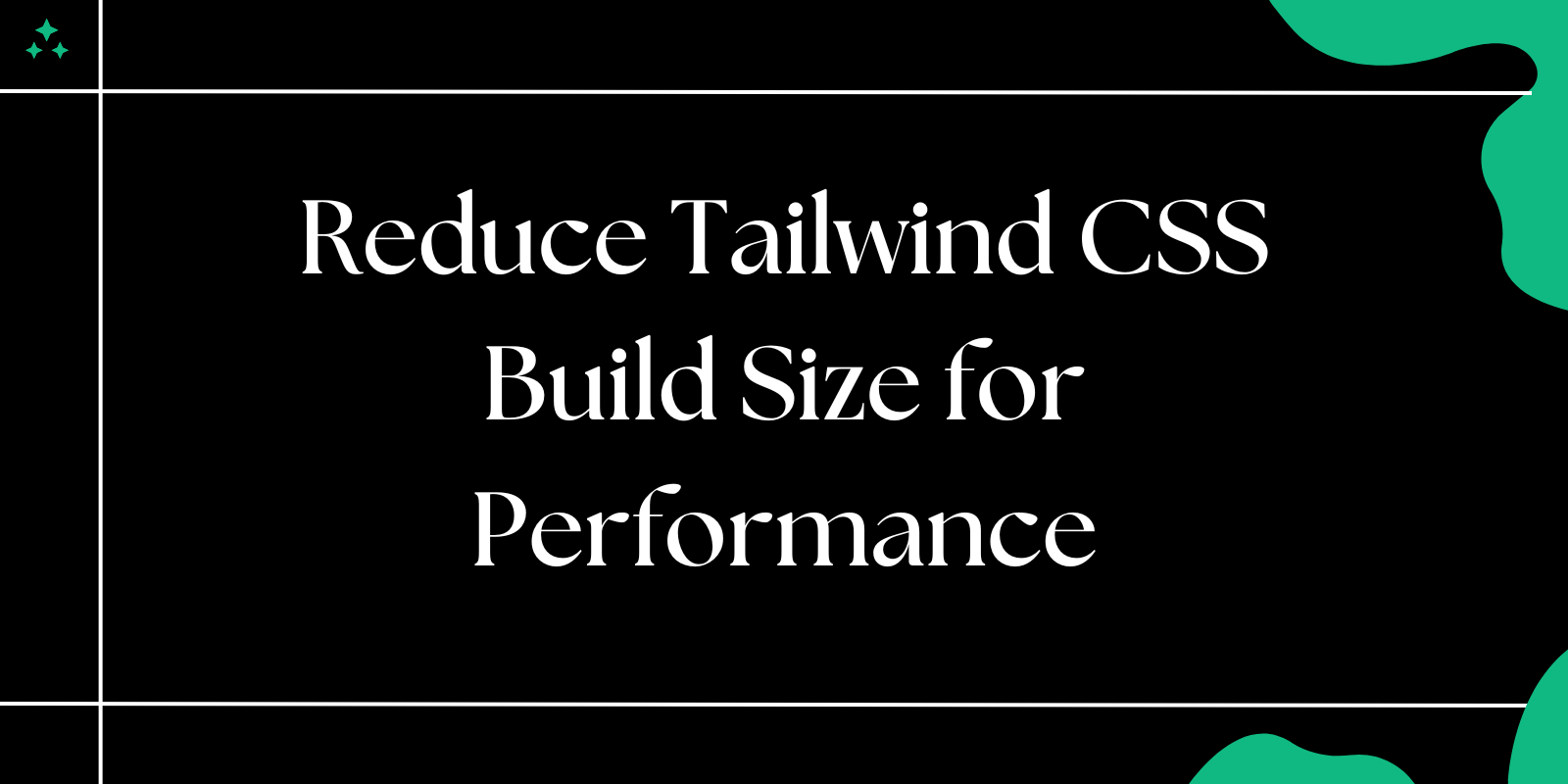Introduction
Tailwind CSS has become one of the most popular CSS frameworks due to its utility-first approach, enabling developers to create responsive and scalable designs without writing extensive custom CSS. Unlike traditional CSS frameworks like Bootstrap, which rely on predefined components and styles, Tailwind provides a set of utility classes that allow for direct styling within HTML.
With Tailwind, you can rapidly build modern interfaces without leaving your HTML file. This eliminates the need to switch between CSS and HTML files, making the development process much faster and more efficient.
Why Choose Tailwind CSS?
- Utility-First Approach
- Tailwind provides low-level utility classes that can be combined to create custom designs without writing additional CSS.
- Example: Instead of defining a separate CSS class, you can apply styles directly:
<button class="bg-blue-500 text-white px-4 py-2 rounded-md">Click Me</button>
- Rapid Development
- Tailwind allows developers to style components without leaving the HTML, significantly speeding up development.
- Highly Customizable
- Unlike traditional frameworks, Tailwind offers extensive theme customization through its
tailwind.config.jsfile.
- Unlike traditional frameworks, Tailwind offers extensive theme customization through its
- Built-in Responsiveness
- Tailwind has mobile-first design built into its classes. Example:
<div class="text-lg md:text-xl lg:text-2xl">Responsive Text</div>
- No Unused CSS (Tree Shaking)
- Tailwind removes unused CSS during production builds, reducing file size and improving performance.
Setting Up Tailwind CSS: Different Methods
Tailwind CSS can be set up in multiple ways, depending on your project requirements. Here, we'll explore two common methods:
- Using the Tailwind CDN – A quick and simple setup without any build process.
- Installing Tailwind via npm – A more customizable and scalable approach.
Method 1: Using the Tailwind CDN (Quick Setup)
If you're looking for a fast way to start using Tailwind CSS without setting up a build tool, the CDN method is the best option. This is great for testing or small projects that don’t require custom configurations.
Step 1: Add the Tailwind CSS CDN
To include Tailwind CSS via CDN, simply add the following <link> inside the <head> section of your HTML file:
<!DOCTYPE html>
<html lang="en">
<head>
<meta charset="UTF-8">
<meta name="viewport" content="width=device-width, initial-scale=1.0">
<title>Tailwind CSS CDN Example</title>
<link href="https://cdn.jsdelivr.net/npm/tailwindcss@2.2.19/dist/tailwind.min.css" rel="stylesheet">
</head>
<body>
<div class="text-center p-6 bg-blue-500 text-white">
<h1 class="text-3xl">Welcome to Tailwind CSS</h1>
<p class="text-lg">Styled with Tailwind utilities</p>
</div>
</body>
</html>
Pros and Cons of the CDN Method
✅ Pros:
- Fast setup – No installation required.
- No build step – Works instantly in any HTML file.
- Great for prototypes – Useful for small projects or testing Tailwind features.
❌ Cons:
- No customization – You can’t modify Tailwind’s configuration.
- Larger file size – Since the entire Tailwind library is loaded, it includes unused styles.
- Not recommended for production – Performance may be affected due to unoptimized styles.
Method 2: Installing Tailwind CSS with npm (Recommended for Projects)
For most web development projects, installing Tailwind CSS via npm is the best approach as it allows for customization, optimization, and better performance.
Step 1: Initialize a New Project
If you're starting from scratch, begin by creating a new project directory and initializing npm:
mkdir my-tailwind-project
cd my-tailwind-project
npm init -y
This command creates a package.json file, which keeps track of your project's dependencies.
Step 2: Install Tailwind CSS and Dependencies
Now, install Tailwind CSS along with PostCSS and Autoprefixer:
npm install -D tailwindcss postcss autoprefixer
npx tailwindcss init -p
- The
-Dflag installs the packages as dev dependencies. - The
tailwindcss init -pcommand generates two configuration files:tailwind.config.js– for Tailwind customization.postcss.config.js– for PostCSS configuration.
Step 3: Configure Tailwind to Remove Unused CSS
By default, Tailwind generates a lot of utility classes. To reduce file size in production, configure the content property in tailwind.config.js to specify where your Tailwind classes are used:
// tailwind.config.js
module.exports = {
content: [
"./src/**/*.{html,js}",
"./public/index.html"
],
theme: {
extend: {},
},
plugins: [],
}
This setup ensures Tailwind purges unused styles for smaller CSS files.
Step 4: Add Tailwind Directives to Your CSS
Create a new CSS file (e.g., styles.css) and add the Tailwind directives:
/* styles.css */
@tailwind base;
@tailwind components;
@tailwind utilities;
These directives inject Tailwind’s prebuilt styles into your project.
Step 5: Build Your CSS
Modify your package.json file to include a build script for processing Tailwind with PostCSS:
"scripts": {
"build": "postcss styles.css -o output.css"
}
Then, generate the compiled CSS file by running:
npm run build
This will create output.css, containing only the used Tailwind styles.
Step 6: Link the Compiled CSS in Your HTML
Finally, include the compiled output.css file in your HTML:
<!DOCTYPE html>
<html lang="en">
<head>
<meta charset="UTF-8">
<meta name="viewport" content="width=device-width, initial-scale=1.0">
<title>My Tailwind Project</title>
<link href="/path/to/output.css" rel="stylesheet">
</head>
<body>
<div class="text-center p-6 bg-blue-500 text-white">
<h1 class="text-3xl">Hello, Tailwind!</h1>
</div>
</body>
</html>
Why Use the npm Method?
✅ Pros:
- Fully customizable – Modify Tailwind’s config to fit your project.
- Optimized for production – Purges unused styles for a smaller CSS file.
- Scalable – Ideal for large applications.
❌ Cons:
- Requires a build step – You must compile the CSS before using it.
Using npm for Tailwind CSS is the best choice for serious projects as it ensures better performance and maintainability. 🚀
Basic Usage of Tailwind CSS Classes
Now that Tailwind CSS is set up, you can start applying utility classes to quickly style your elements without writing custom CSS. Here are some common Tailwind CSS utilities to help you understand how to structure your styles effectively.
1. Text Utilities
Tailwind provides a variety of text-related utilities that allow you to control font size, color, alignment, and other typography properties.
<p class="text-lg text-gray-700 font-semibold">This is a paragraph with Tailwind CSS.</p>
Breakdown:
text-lg→ Sets the font size to large.text-gray-700→ Applies a gray color shade to the text.font-semibold→ Makes the text semi-bold for better visibility.
Additionally, you can modify text alignment like this:
<p class="text-center">This text is centered.</p>
text-left→ Aligns text to the left (default).text-center→ Centers the text.text-right→ Aligns text to the right.
2. Background and Spacing
Tailwind makes it incredibly easy to apply background colors and spacing utilities to elements.
<div class="bg-blue-200 p-6 rounded-lg shadow-md">
<p>Background color and padding example</p>
</div>
Breakdown:
bg-blue-200→ Sets a light blue background.p-6→ Adds padding inside the div.rounded-lg→ Gives the box rounded corners.shadow-md→ Adds a medium shadow effect.
Spacing utilities can also be used to manage margins and paddings efficiently:
<div class="m-4 p-4 bg-gray-100">
This div has margin and padding.
</div>
m-4→ Adds a margin of16pxaround the div.p-4→ Adds padding inside the div.
3. Flexbox Layout and Responsive Design
Tailwind simplifies layout building by providing intuitive Flexbox utilities.
<div class="flex items-center justify-center h-screen bg-gray-200">
<div class="bg-green-500 text-white p-10 rounded-lg">
Centered Box
</div>
</div>
Breakdown:
flex→ Enables Flexbox for positioning elements.items-center→ Aligns content vertically at the center.justify-center→ Aligns content horizontally at the center.h-screen→ Sets the height to full viewport height.bg-green-500→ Applies a green background.p-10→ Adds padding for better spacing.
For responsive design, Tailwind provides built-in breakpoints:
<div class="bg-blue-500 p-6 md:bg-red-500 lg:bg-green-500">
Responsive background color change
</div>
md:bg-red-500→ Changes the background to red on medium screens (≥768px).lg:bg-green-500→ Changes the background to green on large screens (≥1024px).
This enables effortless responsive layouts without writing custom CSS.
4. Customizing Tailwind CSS
Tailwind CSS is highly configurable through the tailwind.config.js file, allowing you to define custom themes, colors, and utilities.
Example: Adding Custom Colors
Modify your tailwind.config.js file to extend the default color palette:
// tailwind.config.js
module.exports = {
theme: {
extend: {
colors: {
customBlue: '#1c92d2',
customGray: '#2a2a2a',
},
},
},
}
Once defined, you can use your custom colors in your HTML:
<div class="bg-customBlue text-white p-4 rounded-md shadow-lg">
Custom color box with Tailwind CSS
</div>
Breakdown:
bg-customBlue→ Uses the newly defined blue shade.rounded-md→ Applies a medium rounded corner effect.shadow-lg→ Adds a large shadow effect for depth.
5. Hover Effects and Transitions
Tailwind CSS provides built-in hover states and transitions to enhance interactivity.
<button class="bg-blue-500 hover:bg-blue-700 text-white font-bold py-2 px-4 rounded">
Hover Me
</button>
Breakdown:
hover:bg-blue-700→ Changes the background color on hover.py-2 px-4→ Adds vertical and horizontal padding for spacing.rounded→ Gives the button rounded corners.
For smooth transitions, you can use:
<button class="bg-red-500 text-white px-6 py-3 rounded-md transition duration-300 ease-in-out transform hover:scale-105">
Smooth Hover Effect
</button>
transition→ Enables CSS transitions.duration-300→ Sets a 300ms animation duration.ease-in-out→ Smooth acceleration and deceleration.transform hover:scale-105→ Slightly zooms in the button on hover.
Why Use Tailwind CSS?
✔ Utility-First Approach → Write less custom CSS and use predefined utilities.
✔ Highly Customizable → Extend styles with tailwind.config.js.
✔ Responsive by Default → Easily apply breakpoints (sm, md, lg, xl).
✔ Optimized for Performance → Unused styles are removed in production builds.
✔ Fast Prototyping → Quickly build layouts with utility classes.
Tailwind CSS makes it easy to create modern, responsive designs without writing complex CSS. Whether you're building a personal blog, an eCommerce site, or a web application, Tailwind provides the flexibility and speed needed for efficient development. 🚀
Conclusion
Tailwind CSS is an incredible tool for building responsive, customizable, and clean UIs quickly. Whether you’re working on a personal project or a large-scale application, Tailwind's utility-first approach helps you style elements directly in your HTML without writing custom CSS. Set up Tailwind using the method that best suits your project, and you’re ready to go.
Happy styling!



